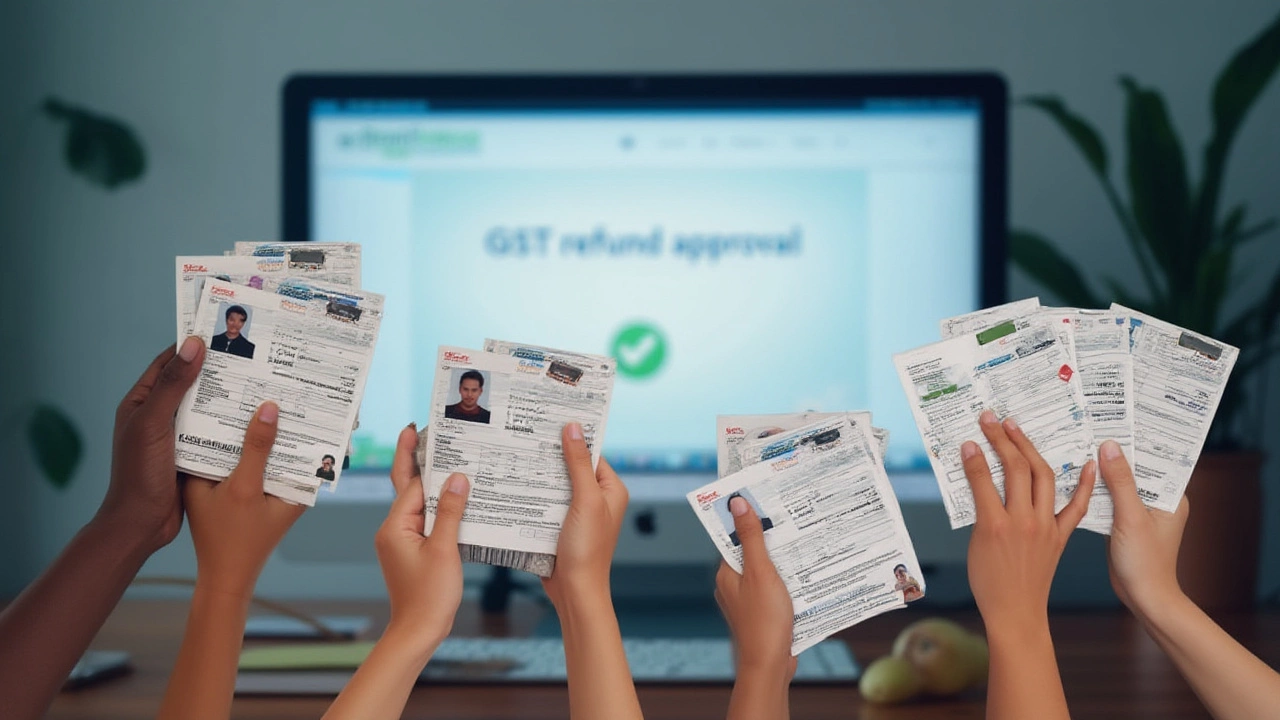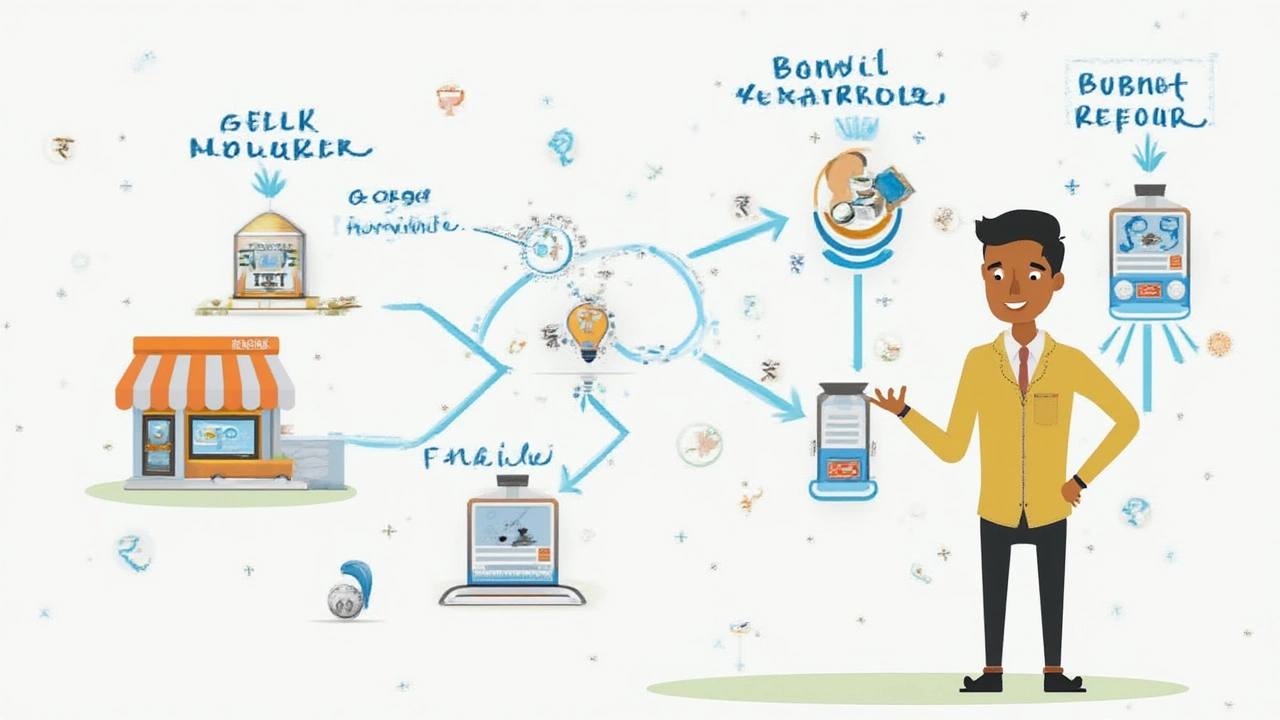Ever wondered if the government owes you some money after paying GST? You’re definitely not alone. Too many businesses and individuals toss aside thousands just because they don’t know that GST refunds even exist, never mind how to claim them. It isn’t just big importers or exporters who qualify—there’s a surprisingly wide net of people and scenarios where you might actually have money waiting back from the taxman. But the catch? If you don’t know the rules, you could leave serious cash on the table.
Who Can Claim a Refund in GST?
You don’t need to be a massive company to qualify for a GST refund. In fact, there are seven broad categories under which you or your business might be eligible. The first big group is exporters—both those shipping goods and those supplying services overseas. If you supply goods or services that are zero-rated under GST (meaning GST is charged at 0%), you can ask for a refund on the input taxes you paid while making those goods or services. For example, if you manufacture bicycle parts for export, all the GST you paid on raw materials can come back to you, as long as you follow the process.
Next up are people who’ve paid GST on goods or services that were not actually supplied. Maybe you paid for an order that never got delivered or the invoice was canceled. As long as you have documentation (think: purchase order, canceled invoice, and proof of payment), you could claim a refund for that GST you originally paid out.
Importers are another group. Let’s say you import raw coffee beans. If you paid GST on those beans at the port and later realized you were exempt or the beans were defective and sent back, there’s a refund waiting if you act in time. Tourists visiting India also often overlook the GST refund advantage. Since 2023, special GST refund counters have started popping up at airports for foreign visitors, so some goods purchased in India can get GST refunded back, provided they’re carried out of the country.
Another category is businesses forced to pay higher tax rates by mistake and later realize they should have paid less. Suppose you sold a product with 18% GST instead of the actual 12% due to a classification error. With proper paperwork, you can recover the excess paid. This particular situation tripped up hundreds of businesses in the first year after GST launched in 2017, costing the economy crores in avoidable tax payments until clarification notices came out from CBIC (Central Board of Indirect Taxes and Customs).
There’s also a huge opportunity for units located in Special Economic Zones (SEZs). These are special hubs where goods are produced mainly for export, and the Indian tax system gives them perks. So, if you’re supplying to SEZs, you can claim a refund for the input GST you’ve paid, provided your supplies qualify as zero-rated.
On top of this, there’s a lesser-known category—‘inverted duty structure.’ This happens when the tax rate on your inputs is higher than the tax rate on your final product. For example, if you’re making LED bulbs and pay 18% GST on components, but the bulbs themselves are taxed at 12%, you can claim a refund for the imbalance. There’s even a quirky fact: reports in 2022 showed that over 20% of all GST refunds filed were due to inverted duty structure claims. Crazy, right?
Finally, let’s not forget about people who paid GST under protest while their case was in court or under investigation—if the verdict comes in your favor, that money can be claimed right back.
Here’s a table that sums up the major categories and who qualifies:
| Category | Example | Key Requirement |
|---|---|---|
| Exporters (Goods/Services) | Engineering firm exporting abroad | Zero-rated supplies, export documentation |
| Cancelled Orders | Retailer paid GST for goods/services never received | Proof of canceled invoice, payment evidence |
| Importers | Coffee bean import, defective return | Customs clearance documents, export evidence |
| SEZ/EOU Units | Supplying software services to SEZ | SEZ status, zero-rated supply invoice |
| Inverted Duty Structure | LED bulbs example | GST rate on input > GST rate on output |
| Excess GST Paid | Sold at 18% instead of 12% | Proof of tax classification and payment details |
| GST Paid in Dispute | Case won after paying GST under protest | Documented legal outcome |
If you think you fall under any of these, there’s a good chance a refund is already waiting for you.

Key Documents and Requirements for a Claim
This isn’t just about filling up a single online form and crossing your fingers. GST refunds need proof, clarity, and most of all, patience—at least if you want the refund processed without endless back-and-forth. The core requirement for any claim is substantial documentation. For exporters, that means shipping bills, invoice copies, payment proofs, and even customs clearance certificates if you’re sending out physical goods. Services? Attach remittance proofs showing foreign exchange received. If something got canceled, bank statements and a formal cancellation notice help—don’t even bother filing if you can’t tell a straightforward story to the tax office.
Every refund claim goes through a digital process called the GST RFD-01 form, which you file through the GST portal. But don’t rush—incomplete details or missed documents almost guarantee a query (and delays that can stretch six months or more). Always double-check invoice numbers. Every expert I know has at least one horror story where a transposed digit led to a show-cause notice and six months of headaches.
The law actually gives you a deadline. You’ve got two years from the ‘relevant date,’ which is different for various cases. For exporters, it’s usually the date your goods actually left the country, not the invoice date. For cancellation, it’s when payment is received back or the invoice is scrapped, whichever comes sooner.
When you file your claim, be ready for the scrutiny. Tax officers want a crystal-clear trail, and your entries in GSTR-1 (sales return) and GSTR-3B (summary return) must match. Claims that don’t reconcile get automatically flagged. It’s honestly wild how many businesses trip up here. For those supplying to SEZs, make sure you hold ‘endorsement’ from the SEZ Officer—a small slip-up on this front leads to instant rejection.
If you’re dealing with the inverted duty structure, attach detailed input-output breakups with purchase invoices and output sales invoices. Pro tip: Compile your claims quarterly rather than monthly unless the amounts are huge, as smaller claims are less likely to attract questions.
There’s also a cool tip: digital signatures and e-verified returns are a must, but you can actually nominate a different authorized signatory to avoid last-minute logins and password issues. For cases involving disputed tax or excess payments, a clear reference to your court case, order copy, or the GST council notification is mandatory.
Want a higher chance of a quick refund? Add a CA (Chartered Accountant) certificate when your claim amount crosses Rs. 2 lakhs. The law doesn’t strictly ask it for every claim, but stats from the GST Portal in early 2024 showed that claims with CA certificates moved about 30% faster.
If you made a simple error (wrong GST code, wrong calculation), file a rectification statement before claiming the refund. Officers can and do check prior returns for mismatches, and a corrected paper trail saves plenty of follow-up misery.
Finally, don’t forget to track your claim online. You can use the ARN (Acknowledgement Reference Number) after submission and get alerts on approval, deficiency, or more documentation required. The refund, after sanction, is credited directly into your business bank account—no awkward cheques or trips to the tax office needed.

Common Mistakes, Insider Tips, and Practical Scenarios
There’s plenty of chatter (and even memes!) in business WhatsApp groups about how GST refunds feel like playing the lottery. But it really comes down to steering clear of some age-old traps. The classic blunder is missing the two-year filing window. Every year, crores go unclaimed, just because business owners assumed they had forever, or didn’t know when the ‘relevant date’ clock started ticking.
Another pitfall—unmatched data in your GST portal returns. Your sales data (GSTR-1), monthly summary (GSTR-3B), and your refund application must match line by line. If even one figure is off, you’ll either get a deficiency notice or straight-out rejection. This is still happening to tech companies exporting software—one government study in 2023 said 17% of refund rejects came from this exact mismatch.
Don’t forget about documentation. The days of verbal explanations or stapled printouts at the tax office are long gone. Every number must have a source—invoices, payment slips, e-way bills, customs papers. And if you’re filing for canceled supplies, attach proof of both payment and refund—banks love asking for more evidence unless it’s airtight.
- GST refund applications work fastest if you submit within three months of the transaction rather than waiting till the deadline. Officers process newer claims first (the logic is that urgent business needs trump old paperwork mistakes), so speed is really an edge here.
- Keep your bank account KYC-compliant and registered on the GST portal. Wrong or old account details lead to failed credit and double the hassle.
- If your refund is delayed beyond 60 days from application, the government actually owes you interest. According to Section 56 of the CGST Act, the standard rate is 6% per annum. Some savvy finance managers deliberately file right after peak deadlines just to earn a bit of extra interest while funds are locked.
- Don’t try to fudge invoices or claim for supplies never made. The GST system connects every transaction digitally, and misrepresentation can get you banned from claiming refunds for up to five years—not to mention fines.
- If your claim is rejected, don’t panic. You get a show-cause notice and one window to clarify or submit extra docs. About 40% of claims that get rejected on first swipe are approved after clarification, especially if you’ve kept your email and phone updated for prompt communication.
Want to avoid the stress? Get a GST consultant to review your records every quarter, not just at year-end. The fee you pay is tiny compared to what you might otherwise lose to errors or missed deadlines.
Let’s look at a real-world scenario: A textiles exporter in Ahmedabad paid GST on cotton yarn (input) at 12%, exported shirts at 0% because exports were zero-rated, but forgot to claim the input GST till the end of year two. Thanks to a calendar reminder set by their finance lead—literally a phone pop-up two weeks before the deadline—the company filed just in time and recovered Rs. 14 lakhs that would have been lost forever. Sometimes technology, and timely alerts, are your best friends in this bureaucratic maze.
An e-commerce seller from Jaipur shared how they once ignored the inverted duty structure clause, assuming it only applied to manufacturers. But after reading a short blog on a GST forum, they realized retailers importing goods can claim difference refunds too. That little awareness led to a fat Rs. 7 lakh credit—the kind of happy ending everyone wishes for.
Another funny but true example: A Mumbai-based travel agency applied for GST refund on a service wrongly classified under 18%. Their auditor spotted the mistake; all it took was a six-line letter and attaching the right notification issued by the GST Council. The claim was adjusted and money released within 19 days. So yes, the system can work—if you work it right.
So, whether you’re a business owner, trader, or even a tourist, your first step is to ask: “Did I pay GST that I shouldn’t have, or on supplies where law says I deserve a break?” If yes, don’t just let it slide. A simple application, the right paperwork, and a little persistence could put that money right back in your account.

